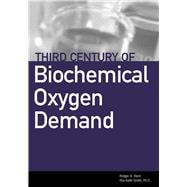The most comprehensive summary and literature review of Biochemical Oxygen Demand (BOD) on the market! BOD is one of the fundamental concepts in wastewater treatment. Throughout the 1800s and the 1900s, BOD was exhaustively studied and refined, both as a concept and as an analytical procedure. Review all previous BOD work--including why technicians, scientists, plant operators, regulators, and engineers have complained about the BOD test for many years.This book is intended to serve three purposes: first and foremost, is to describe BOD as a test procedure and biological phenomenon; secondly, to describe the place of BOD within the complex of testing that is used to evaluate treatment processes; lastly, is to present the development of BOD and preserve all peer-reviewed literature citations that mark the road to the current test.
Written by Rodger B. Baird and Roy-Keith Smith. Mr. Baird is Manager of Laboratories for the Los Angeles County Sanitation Districts, where he has worked in laboratory supervision and management for more than 30 years. Dr. Smith has written over 60 published articles and is the author of eight books (one in the 4th edition) on environmental analysis. Chapters detailing sediment oxygen demand, chemical oxygen demand, and total organic carbon testing and their relationship to BOD testing, as well as extensive coverage of the interferences encountered during oxygen demand testing makes this a must-have reference.








